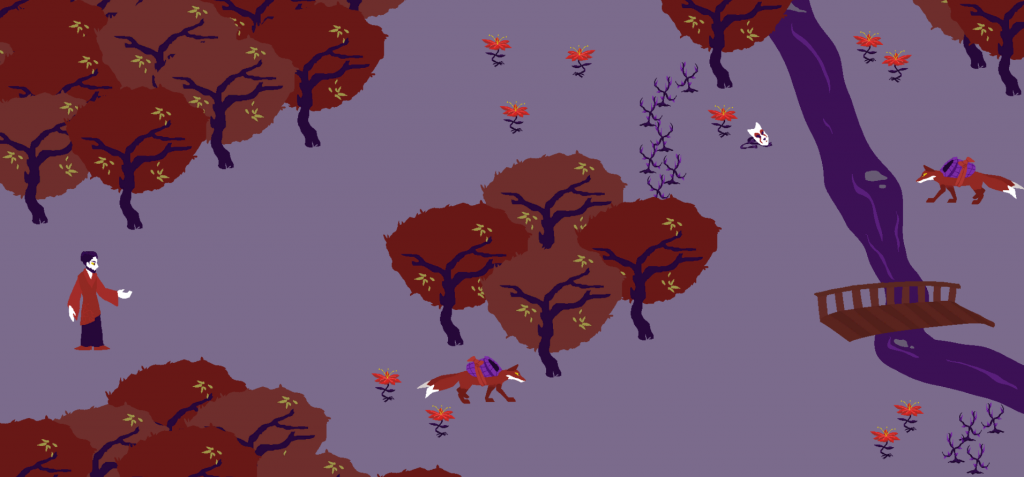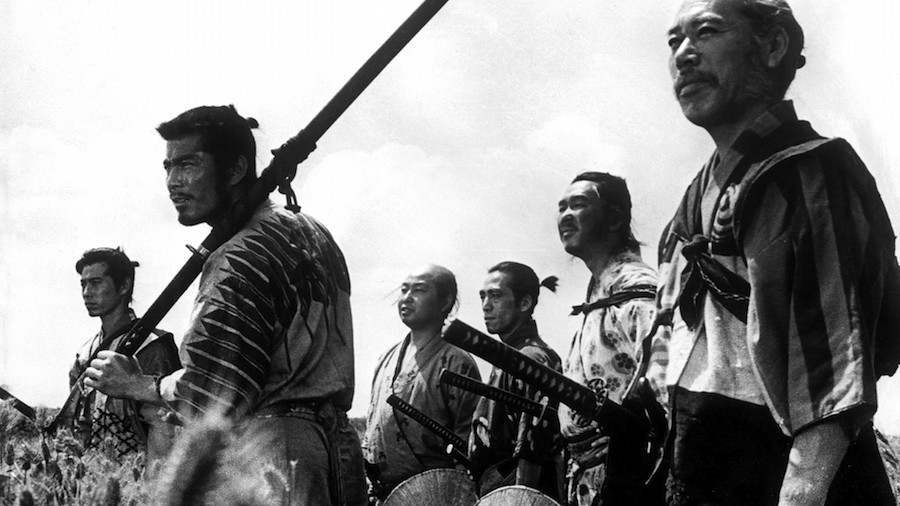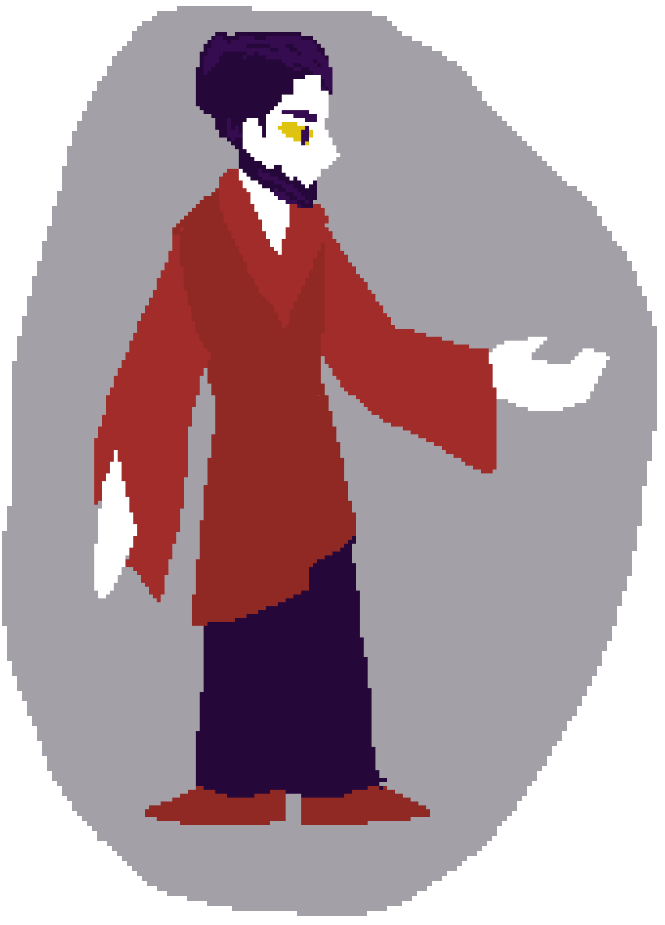
When we, the Level Design class of fall 2019, were told to build a collection game, I initially struggled with ideas. Looking back on it, having struggled with ideas feels almost silly now; “collection game” is a wonderfully broad category of works to be able to make, and many games I’ve played and enjoyed have elements of collection embedded in them. But I couldn’t think of a way to not build another Pac-Man for a few days. Eventually, in a bid for creative inspiration, I settled down into my desk chair on an unimportant Tuesday and decided to just draw the sprites and see what happened.
And draw them I did.


Out of this came the tiny fantasy world of the game I would later call Bladeblossom, inspired heavily by the works of Kurosawa and artists like him. I had never made a work with a Japanese-style fantasy aesthetic. But then, I had barely ever made a game before. I didn’t really know what I was doing. My goal was to convey, with as simple of a mechanical element as I could, a feeling of involvement in a larger narrative. I wanted the game to feel like it had a whole world backing it up.
The best thing that I think I did for my design was stick to a very strict color palette. The worldbuilding was an attempt to use organic-seeming bounds, as well, recalling from my childhood the way games like Pokemon Pearl used trees and rivers and mountains as natural bounds that I as a player had been disinclined to question: a sense of “of course you can’t go through; there’s a dense forest that way. With as natural a map as I could muster and a color palette locked into just a few variations on purple, red, and white, I produced a game level that kept a consistent style as well as I could hope it to.

Writing the Unity code for Bladeblossom proved to be a bit of a challenge; true to the axiom, there was always something broken. My player avatar spent about a week refusing to come onto the screen at the top of a level, and the mobs (two-tailed kitsune with flower-collecting baskets) underwent a short period of unpredictability, standing in single spots and vibrating like trembling Chihuahuas. It was funny! But it also wasn’t functional, and that was a problem. I spent more late nights than I anticipated sitting at the same desk I’d started at, hashing and re-hashing a few lines of C#.

The difference for me between the initial game concept and the end product was actually pretty minimal. I had a hard time summoning up a concept initially, but to my credit, I stuck with one when I had it; if I had re-worked it any more than I did I wouldn’t be ending with much more than a spritesheet. My paper game was a direct printout of my real assets, too– less useful in terms of playing with abstractions, but more useful in knowing the real sizes of the game objects. My art for this project walked a fine line of detail. It had to be detailed enough to suggest what I wanted, but given the layout of the game, it also had to stay tiny.

Bladeblossom‘s adventure-y, mystical elements were intentionally highlighted. I wanted the strangeness and mystery to be emphasized for the fun twist at the end: my initial concept was a swordsmaster going on a very serious and important journey to collect flowers for a reason that the player would only find out when they completed the game– only then realizing that they were to present to the master’s students on their last day of study. Because of that, I wanted the player to guess at what the flowers were and what the magic elements were. Perhaps I suggest some kind of mystical quest, or an upcoming final battle.

In fact, the story really marks the difference between concept and code. The biggest change in my game is that the full realization would include a couple of wordless illustrated story cards. As of publishing date, these have not been implemented, but I am not done with this piece! I hope to draw those, implement them, and work the last few bugs from the code. Bladeblossom feels good for a first project, and I look forward to bringing the game to its full potential before long.